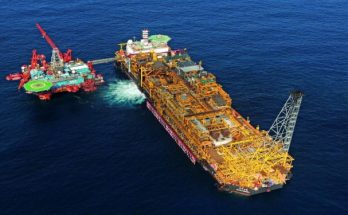 Landlocked South Sudan is bordered to the north by Sudan, to the east by Ethiopia, to the south by Uganda and Kenya, and to the west by the Democratic Republic of the Congo and Central African Republic. As the only major oil producer in East Africa, its 3.5 billion barrels of proven oil reserves remain of strategic importance to a region in short supply of both energy and infrastructure. However, domestic oil production has largely been viewed in isolation, with the vast majority exported as crude petroleum to China. As the country unlocks a new chapter in its history, South Sudan is repositioning itself as a gateway to East African energy development, specifically through the creation of regional, integrated supply chains and export-driven growth.
Landlocked South Sudan is bordered to the north by Sudan, to the east by Ethiopia, to the south by Uganda and Kenya, and to the west by the Democratic Republic of the Congo and Central African Republic. As the only major oil producer in East Africa, its 3.5 billion barrels of proven oil reserves remain of strategic importance to a region in short supply of both energy and infrastructure. However, domestic oil production has largely been viewed in isolation, with the vast majority exported as crude petroleum to China. As the country unlocks a new chapter in its history, South Sudan is repositioning itself as a gateway to East African energy development, specifically through the creation of regional, integrated supply chains and export-driven growth.
In neighbouring Kenya, for example, the Lamu Port-South Sudan-Ethiopia-Transport (LAPSSET) Corridor project aims to foster connectivity among East African countries through the establishment of large-scale transport and logistics infrastructure. Holding approximately 4 billion barrels of oil reserves in the South Lokichar Basin alone, Kenya has long-held ambitions to commercialize its oil wealth after Tullow Oil 1st discovered oil in Block 10BB in Turkana almost a decade ago.
In January, Tullow Oil, in conjunction with partners TotalEnergies and Africa Oil, submitted its final field development plan for the US$ 3.4-billion Lokichar oil project located in northern Kenya that would see 1st commercial production as soon as 2025. Currently under evaluation by Kenya’s Ministry of Petroleum and Mining, the new plan will unlock 585 million barrels of oil to be refined at a crude oil processing facility in Lokichar and exported via a 130,000-barrel per day pipeline to Lamu Port. Stretching from South Sudan’s oil fields to Lokichar, Kenya, the pipeline would then connect to the existing Kenya Crude Oil Pipeline and end at Lamu Port for export to international markets. South Sudanese oil would feed the pipeline, as an alternative to pumping via the Greater Nile Oil Pipeline to Port Sudan.
While the South Sudanese Government has been lukewarm on the project to date, citing concerns over cost and viability in light of COVID-19 and fluctuating oil prices, its participation is set to play a vital role in the growth of the wider region. In addition to boosting South Sudan’s own oil exports, the new pipeline will drive socioeconomic development within marginalized northern Kenya by spurring local job creation and integrating rural and isolated communities into regional supply chains through key export and trade infrastructure. In addition to the crude oil pipeline, the LAPSSET Corridor project comprises a railway line, road network connecting Lamu, Garissa, Isiolo, Moyale and Turkana, a dam along Tana River, airports and associated industrial areas. The newly-constructed Lamu Port, which was launched in May 2021, is intended to connect landlocked East African economies with global trade routes and complement Kenya’s existing industrial hub in Mombasa, with a view to establishing a special economic zone.
If construction of the pipeline continues according to plan, the LAPSSET Corridor project will not only advance the development of Kenya as a major energy exporter, but also position South Sudan as a strategic gateway to broader energy development. In this respect, South Sudanese oil is directly serving to catalyse broad-based growth in the region by expanding and feeding the pipeline of East African exports to global markets.




